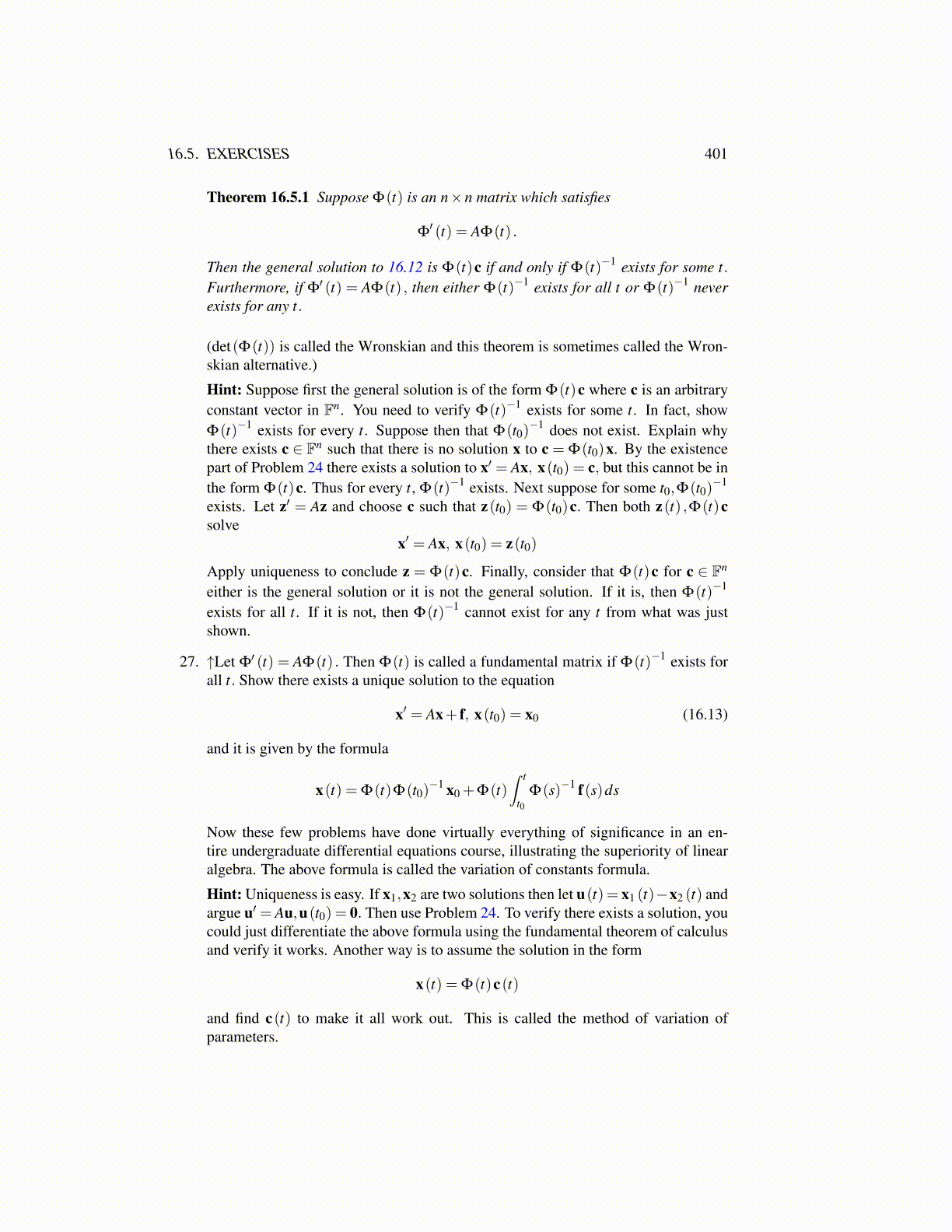
16.5. EXERCISES 401
Theorem 16.5.1 Suppose Φ(t) is an n×n matrix which satisfies
Φ′ (t) = AΦ(t) .
Then the general solution to 16.12 is Φ(t)c if and only if Φ(t)−1 exists for some t.Furthermore, if Φ′ (t) = AΦ(t) , then either Φ(t)−1 exists for all t or Φ(t)−1 neverexists for any t.
(det(Φ(t)) is called the Wronskian and this theorem is sometimes called the Wron-skian alternative.)
Hint: Suppose first the general solution is of the form Φ(t)c where c is an arbitraryconstant vector in Fn. You need to verify Φ(t)−1 exists for some t. In fact, showΦ(t)−1 exists for every t. Suppose then that Φ(t0)
−1 does not exist. Explain whythere exists c ∈ Fn such that there is no solution x to c = Φ(t0)x. By the existencepart of Problem 24 there exists a solution to x′ = Ax, x(t0) = c, but this cannot be inthe form Φ(t)c. Thus for every t, Φ(t)−1 exists. Next suppose for some t0,Φ(t0)
−1
exists. Let z′ = Az and choose c such that z(t0) = Φ(t0)c. Then both z(t) ,Φ(t)csolve
x′ = Ax, x(t0) = z(t0)
Apply uniqueness to conclude z = Φ(t)c. Finally, consider that Φ(t)c for c ∈ Fn
either is the general solution or it is not the general solution. If it is, then Φ(t)−1
exists for all t. If it is not, then Φ(t)−1 cannot exist for any t from what was justshown.
27. ↑Let Φ′ (t) = AΦ(t) . Then Φ(t) is called a fundamental matrix if Φ(t)−1 exists forall t. Show there exists a unique solution to the equation
x′ = Ax+ f, x(t0) = x0 (16.13)
and it is given by the formula
x(t) = Φ(t)Φ(t0)−1 x0 +Φ(t)
∫ t
t0Φ(s)−1 f(s)ds
Now these few problems have done virtually everything of significance in an en-tire undergraduate differential equations course, illustrating the superiority of linearalgebra. The above formula is called the variation of constants formula.
Hint: Uniqueness is easy. If x1,x2 are two solutions then let u(t) = x1 (t)−x2 (t) andargue u′ = Au,u(t0) = 0. Then use Problem 24. To verify there exists a solution, youcould just differentiate the above formula using the fundamental theorem of calculusand verify it works. Another way is to assume the solution in the form
x(t) = Φ(t)c(t)
and find c(t) to make it all work out. This is called the method of variation ofparameters.